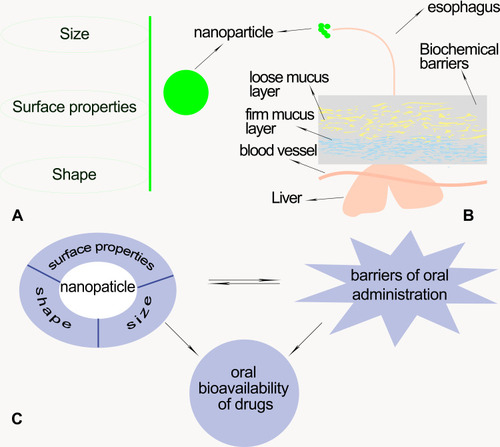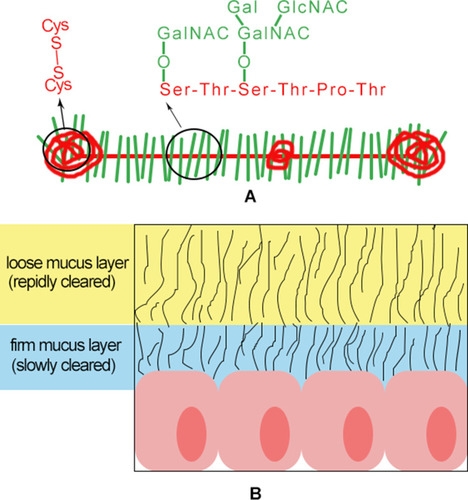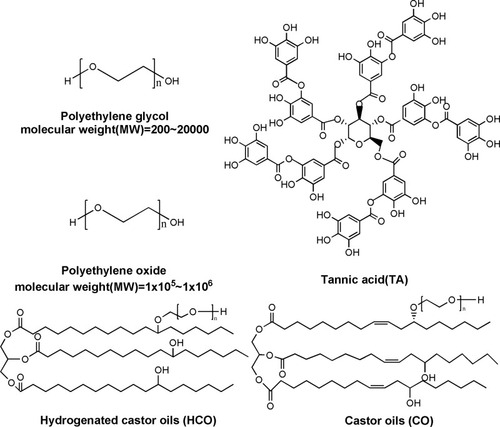Figures & data
Figure 2 (A) The nanoparticle properties including size, surface properties, and shape of nanoparticles. (B) Schematic representation illustrating the biochemical and physiological barriers of oral drug delivery. (C) The relationship of the nanoparticle properties, oral bioavailability, and barriers in oral delivery.

Table 1 Thickness of Mucus in Different Parts of the Human Gastrointestinal Tract
Figure 3 (A) Highly O-glycosylated mucin domains. Red, protein core; Green, oligosaccharides. (B) Schematic representation illustrating two types of mucus.

Table 2 The Effect of Various Surface Modification Materials of Nanoparticles on the Oral Administration
Table 3 The Different Internalization Pathways Corresponding to Different Cells and the Main Shapes Associated with Them


